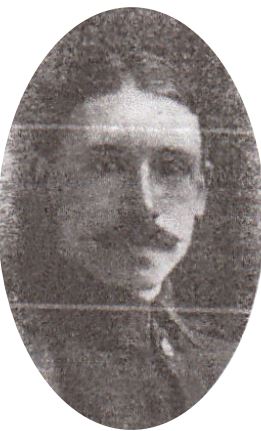7th Battalion, Gloucestershire Regiment

Frederick George Smith was born in Gloucester on 24 October 1890. He was the only child of John and Rhoda Smith, who lived in Hartington Road in the Linden district of Gloucester.
Frederick’s early schooling was spent in Gloucester and at the age of 13 he became a ‘pupil teacher’, as part of an apprenticeship system for aspirant teachers, who, over a typically five year period, learned the art of teaching whilst continuing their own school education. He attended teacher training college between 1909 and 1911 and in 1912 was appointed as an Assistant Teacher at Widden Street Council School in Gloucester. He was a popular teacher, with a great interest in sport and was given a great send off by his students when he left for military training on 1 September 1914, having enlisted and been posted to the 7th Battalion of the Gloucestershire Regiment.
His abilities were soon recognised and by 12 October 1914 he had risen to the rank of Serjeant. Following training, on 19 June 1915 he sailed with his battalion from Avonmouth for the Dardanelles. The 7th Glosters (part of 39 Brigade, 13 Division) landed at Y Beach on the Gallipoli Peninsular on 11 July 1915. On 7/8 August the battalion took part in a major but abortive attempt to capture the heights of Chanak Bair, in support of the New Zealanders. For the battalion it was an extremely costly attack, with 11 officers and 350 Other Ranks, killed, wounded or missing. According to the War Diary this included all the battalion’s CSMs and CQMSs. It is not known if Serjeant Smith took part in the attack but he appears to have been promoted to Acting CQMS shortly after.
By 20 August the battalion had been withdrawn to a trench line in front of 39 Brigade’s HQ. Frederick Smith was killed in action the next day. The circumstances of his death are uncertain. There is no mention of casualties in the War Diary and Soldiers Died in the Great War shows him as the only member of the battalion killed in action that day. A letter to his widow from a comrade says he was ‘shot through the head’, a common euphemism; possibly he was the victim of a stray shell or sniper. He has no known grave and is commemorated on the Helles Memorial to the Missing of the Gallipoli campaign. He is also commemorated on the Gloucester War Memorial. Frederick Smith left a widow and two very young children. At their first autumn meeting of 1915 the Gloucester Education Committee paid tribute to him ‘as a most esteemed and valued Assistant Master’.
